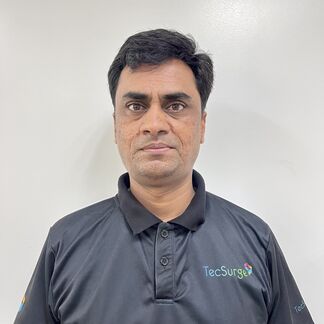Overcoming Challenges in S3D Support Assembly Development
by Manoj Lalsare
Singapore, February 13th, 2025. Support assembly development in S3D is a crucial but often time-consuming task that requires careful attention to detail. While creating individual support parts is relatively straightforward with available tools, combining them into a complete assembly presents several challenges.

Manoj Lalsare, 3D Principal Solution Engineer at TecSurge, is a seasoned IT professional with 21 years of experience in IT services, specializing in CAD customization. With his focus on S3D customization, he has a deep understanding of automation and optimization in 3D design workflows. In addition, Manoj possesses extensive knowledge in Smart P&ID and SmartSketch automation, contributing to innovative and efficient engineering solutions.
Common Challenges in Support Assembly Development
Developing support assemblies involves multiple intricate steps, requiring precision and consistency. Some of the key challenges include:
- Complexity of Manual Processes – The development process often involves multiple steps that require thorough knowledge of specific methodologies.
- Consistency Issues – Variations in approach and execution can make maintaining and modifying assemblies difficult over time.
- Time-Intensive Workflows – Without a structured approach, assembling supports can be a lengthy process, leading to potential inefficiencies.
- Error-Prone Procedures – Without a standardized approach, inconsistencies and errors may arise, impacting project quality and timelines.
Improving Efficiency in S3D Development
To address these challenges, I introduced an improved methodology, offering a more structured and efficient approach to support assembly development. By streamlining processes, the following benefits can be achieved:
- Scalability for Complex Projects – The methodology is designed to accommodate both simple and complex assemblies, ensuring flexibility for evolving project requirements.
- Improved Accuracy & Consistency – Standardized procedures help minimize errors, ensuring uniform quality across projects.
- Enhanced Accessibility – A simplified approach enables a wider range of team members to contribute effectively with minimal training.
A Smarter Approach to Development
This refined workflow begins with gathering essential details, such as assembly names, component specifications, and required configurations. Each step follows a structured sequence to ensure consistency and accuracy. Any discrepancies are identified and addressed before final deployment, ensuring high-quality results with minimal revisions.
Looking Ahead
The improvements in support assembly development are already making an impact by enhancing efficiency, reducing errors, and improving scalability. Future refinements will continue to build on this foundation, further optimizing workflows for increasingly complex project requirements.
By adopting smarter development strategies, we are enhancing productivity and paving the way for an efficient and scalable future in S3D development.
If you would like to discuss what we can achieve working together, please leave me a comment below or contact us.